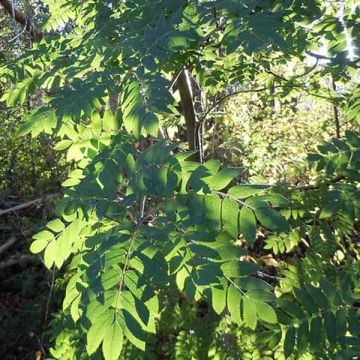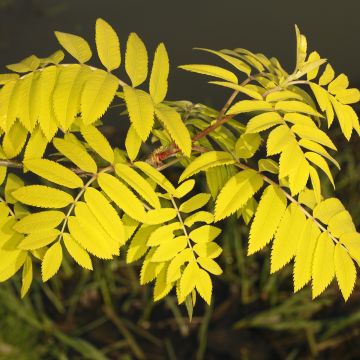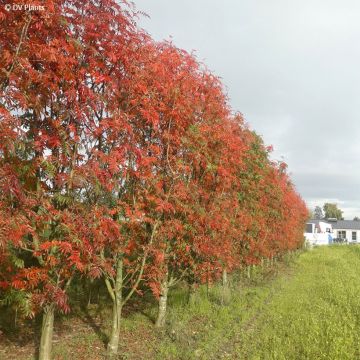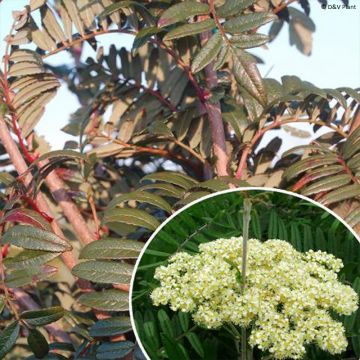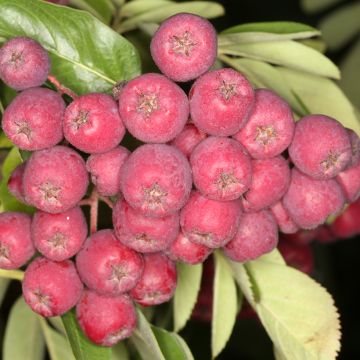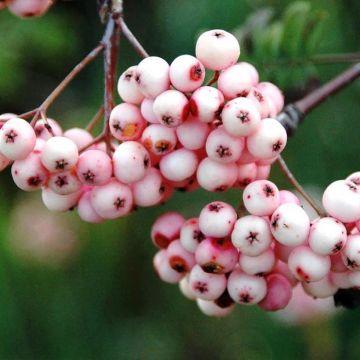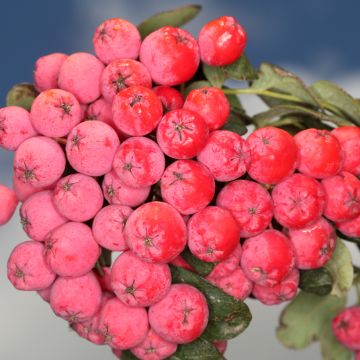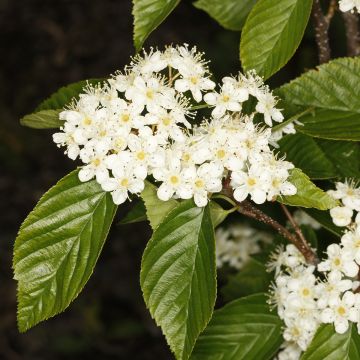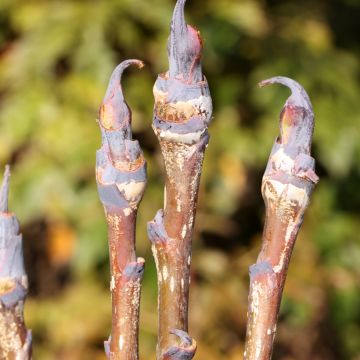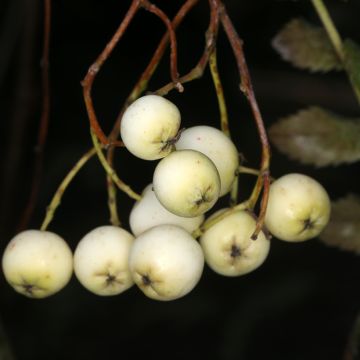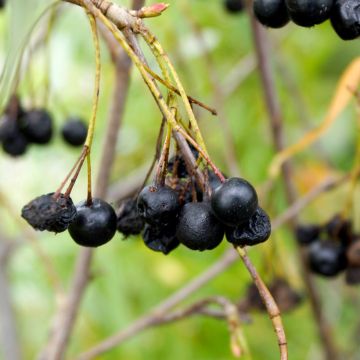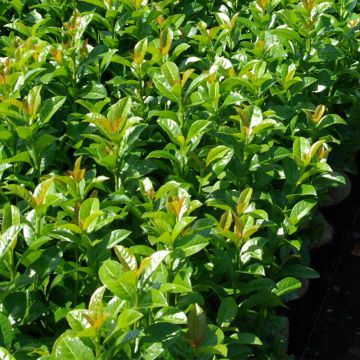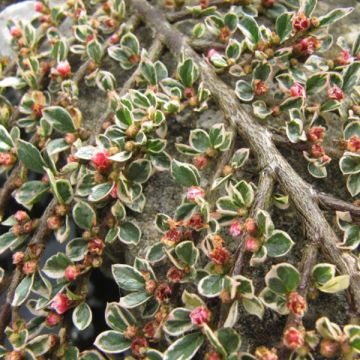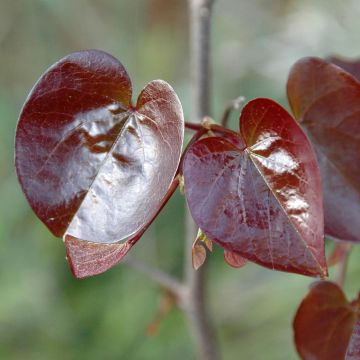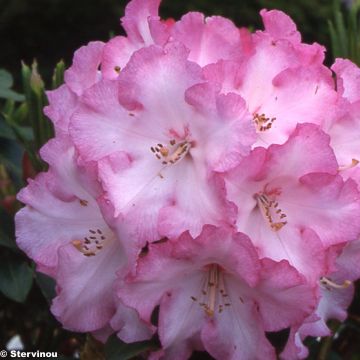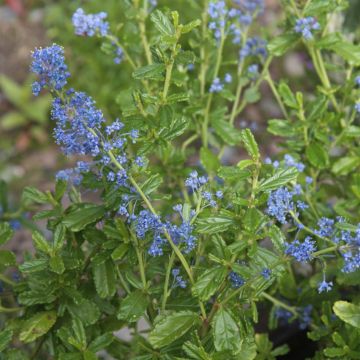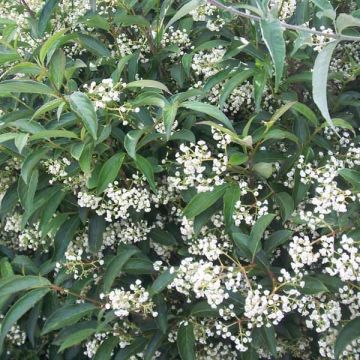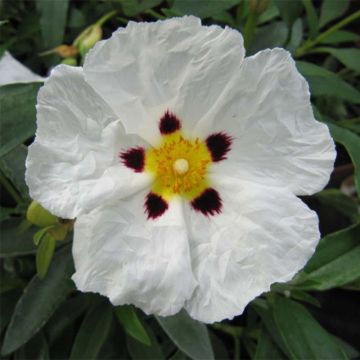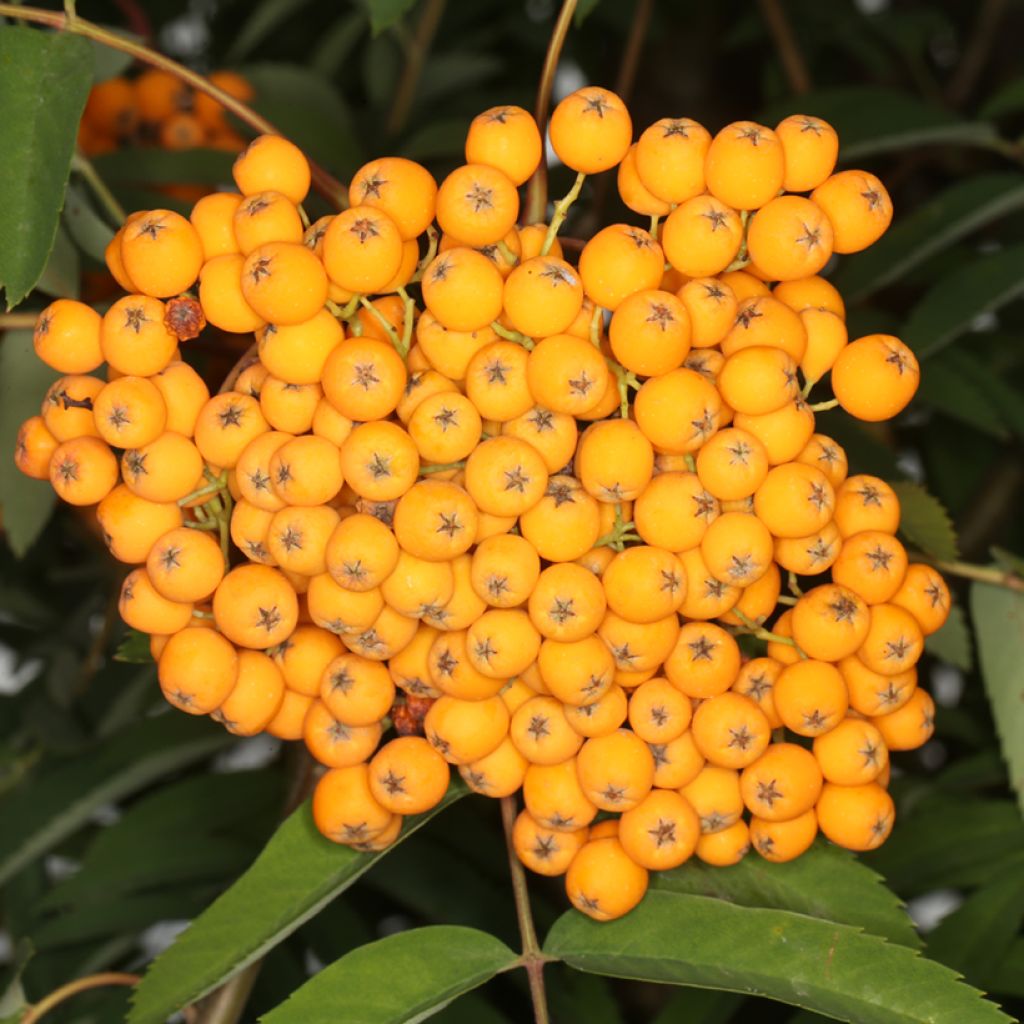

Sorbus Schouten - Arnold Rowan
Sorbus Schouten - Arnold Rowan
Sorbus x arnoldiana Schouten
Arnold Rowan, Arnold Mountain Ash
Why not try an alternative variety in stock?
View all →This plant carries a 24 months recovery warranty
More information
We guarantee the quality of our plants for a full growing cycle, and will replace at our expense any plant that fails to recover under normal climatic and planting conditions.
Oversize package: home delivery by special carrier from €6.90 per order..
Express home delivery from €8.90.
Does this plant fit my garden?
Set up your Plantfit profile →
Description
Sorbus x arnoldiana 'Schouten' is a variety of Rowan whose silhouette fits well in both urban gardens and more rural environments. It forms a small tree with a pyramidal habit and dark green foliage, composed of elegantly cut compound leaves. These provide a beautiful backdrop to the white spring flowering, which later develops into small decorative yellow-ochre berries. This quite hardy variety is very adaptable in terms of growing conditions, thriving in full sun and tolerating partial shade, but it is sensitive to both excessive dryness and stagnant moisture.
Rowan is a member of the large and important Rosaceae family, which encompasses around 5000 species of plants found in the countryside (bramble, herbaceous potentilla...), ornamental plants (Rhaphiolepis, Amelanchier, Sorbaria...) and a significant portion of temperate and Mediterranean fruit trees (Pear, Apricot...). The Sorbus genus includes more than a hundred species, which has led to the distinction of two main groups: the Rowans, with compound leaves, and the Whitebeams, with simple leaves.
'Schouten' is a variety that was identified in the Netherlands in the 1950s among a sowing of Sorbus discolor. It was later found to be related to Sorbus x arnoldiana, a hybrid resulting from the cross-breeding of Sorbus aucuparia (the well-known Rowan) and Sorbus discolor, which originates from northern China where it can reach heights of up to 10 m. This hybrid was described in 1920 by the great botanist Alfred Rehder, who was for many years the curator at the Arnold arboretum in the United States. This small tree with medium growth and development will reach 4 m in height and 2 m in width within 10 years of planting, and after 20 years, approximately 7 m tall and 4 m wide. Continuing its growth at a much slower rate thereafter, it usually peaks at about 8 m in height. It forms a generally straight trunk, supporting a fairly regular conical to pyramidal crown, and does not require formative pruning. The branches bear odd-pinnate leaves, composed of an odd number of leaflets arranged oppositely in pairs, with the extra leaflet extending from the leaf rachis. Numbering from 9 to 17 (rarely up to 21), the leaflets measure 5 to 7 cm long and 2 to 3 cm wide, with finely toothed edges. The large leaves have a very graceful appearance, somewhat reminiscent of certain ferns. They are of a medium to dark green, providing a sufficiently dark background to beautifully highlight the white flowering. Appearing in May, or even June, the umbels of small flowers measure over 10 cm in diameter and, while not exceptionally beautiful, enhance the overall appearance of the plant. After fertilisation, they produce small spherical berries of 1 cm in diameter, with a yellow-ochre colour. Less spectacular than varieties with red fruits, and also somewhat less fruitful, 'Schouten' is nonetheless of interest, as the less attractive berries for birds remain on the tree longer in winter. And like many other cultivars, this deciduous Rowan displays very attractive autumn colours, in shades of red to orange, to beautifully conclude the growing season.
Rowan 'Schouten' boasts a lovely silhouette and fruiting of an original colour. Very resistant to urban pollution, its moderate dimensions will make it easy to find a place for it in our small city gardens. If you appreciate decorative fruits, plant a Snowberry (Symphoricarpos) at its feet, whose natural appearance will harmonise perfectly with that of the Rowan. Opt for a variety with pink fruits to contrast with the berries of your Rowan. Diversify your range with Amelanchier alnifolia 'Smoky', a bush with a somewhat wild appearance, which will reward you with a superb white flowering earlier than your Rowan, and with fruits reminiscent of blueberries that you can enjoy. Moreover, its foliage takes on beautiful yellow or orange hues, which will harmonise wonderfully with the autumn attire of 'Schouten'. And to brighten up your summer, add to your bed Rosa californica 'Plena', a wonderful rose with a natural habit, which will offer you a splendid and abundant pink flowering in June and July!
Report an error about the product description
Plant habit
Flowering
Foliage
Botanical data
Sorbus
x arnoldiana
Schouten
Rosaceae
Arnold Rowan, Arnold Mountain Ash
Cultivar or hybrid
Other Sorbus - Mountain Ash
Planting and care
Sorbus x arnoldiana 'Shouten' thrives in sunlight but can also grow in light shade. If possible, shelter it from prevailing winds to avoid uprooting. It appreciates rich, moist soil but requires a well-drained location that is not too wet. It grows well in loamy-sandy or clayey-sandy soil, slightly moist, preferably with an acidic or neutral pH. It tolerates short periods of drought fairly well but may suffer during prolonged heatwaves if not watered. Soak the root ball for a quarter of an hour in a bucket of water before planting, add a bit of slightly acidic potting soil in the hole, position it, backfill all around, and water thoroughly. Afterwards, provide water during very dry periods, especially during the first few years.
Planting period
Intended location
Care
This item has not been reviewed yet - be the first to leave a review about it.
Spring-flowering shrubs
Haven't found what you were looking for?
Hardiness is the lowest winter temperature a plant can endure without suffering serious damage or even dying. However, hardiness is affected by location (a sheltered area, such as a patio), protection (winter cover) and soil type (hardiness is improved by well-drained soil).

Photo Sharing Terms & Conditions
In order to encourage gardeners to interact and share their experiences, Promesse de fleurs offers various media enabling content to be uploaded onto its Site - in particular via the ‘Photo sharing’ module.
The User agrees to refrain from:
- Posting any content that is illegal, prejudicial, insulting, racist, inciteful to hatred, revisionist, contrary to public decency, that infringes on privacy or on the privacy rights of third parties, in particular the publicity rights of persons and goods, intellectual property rights, or the right to privacy.
- Submitting content on behalf of a third party;
- Impersonate the identity of a third party and/or publish any personal information about a third party;
In general, the User undertakes to refrain from any unethical behaviour.
All Content (in particular text, comments, files, images, photos, videos, creative works, etc.), which may be subject to property or intellectual property rights, image or other private rights, shall remain the property of the User, subject to the limited rights granted by the terms of the licence granted by Promesse de fleurs as stated below. Users are at liberty to publish or not to publish such Content on the Site, notably via the ‘Photo Sharing’ facility, and accept that this Content shall be made public and freely accessible, notably on the Internet.
Users further acknowledge, undertake to have ,and guarantee that they hold all necessary rights and permissions to publish such material on the Site, in particular with regard to the legislation in force pertaining to any privacy, property, intellectual property, image, or contractual rights, or rights of any other nature. By publishing such Content on the Site, Users acknowledge accepting full liability as publishers of the Content within the meaning of the law, and grant Promesse de fleurs, free of charge, an inclusive, worldwide licence for the said Content for the entire duration of its publication, including all reproduction, representation, up/downloading, displaying, performing, transmission, and storage rights.
Users also grant permission for their name to be linked to the Content and accept that this link may not always be made available.
By engaging in posting material, Users consent to their Content becoming automatically accessible on the Internet, in particular on other sites and/or blogs and/or web pages of the Promesse de fleurs site, including in particular social pages and the Promesse de fleurs catalogue.
Users may secure the removal of entrusted content free of charge by issuing a simple request via our contact form.
The flowering period indicated on our website applies to countries and regions located in USDA zone 8 (France, the United Kingdom, Ireland, the Netherlands, etc.)
It will vary according to where you live:
- In zones 9 to 10 (Italy, Spain, Greece, etc.), flowering will occur about 2 to 4 weeks earlier.
- In zones 6 to 7 (Germany, Poland, Slovenia, and lower mountainous regions), flowering will be delayed by 2 to 3 weeks.
- In zone 5 (Central Europe, Scandinavia), blooming will be delayed by 3 to 5 weeks.
In temperate climates, pruning of spring-flowering shrubs (forsythia, spireas, etc.) should be done just after flowering.
Pruning of summer-flowering shrubs (Indian Lilac, Perovskia, etc.) can be done in winter or spring.
In cold regions as well as with frost-sensitive plants, avoid pruning too early when severe frosts may still occur.
The planting period indicated on our website applies to countries and regions located in USDA zone 8 (France, United Kingdom, Ireland, Netherlands).
It will vary according to where you live:
- In Mediterranean zones (Marseille, Madrid, Milan, etc.), autumn and winter are the best planting periods.
- In continental zones (Strasbourg, Munich, Vienna, etc.), delay planting by 2 to 3 weeks in spring and bring it forward by 2 to 4 weeks in autumn.
- In mountainous regions (the Alps, Pyrenees, Carpathians, etc.), it is best to plant in late spring (May-June) or late summer (August-September).
The harvesting period indicated on our website applies to countries and regions in USDA zone 8 (France, England, Ireland, the Netherlands).
In colder areas (Scandinavia, Poland, Austria...) fruit and vegetable harvests are likely to be delayed by 3-4 weeks.
In warmer areas (Italy, Spain, Greece, etc.), harvesting will probably take place earlier, depending on weather conditions.
The sowing periods indicated on our website apply to countries and regions within USDA Zone 8 (France, UK, Ireland, Netherlands).
In colder areas (Scandinavia, Poland, Austria...), delay any outdoor sowing by 3-4 weeks, or sow under glass.
In warmer climes (Italy, Spain, Greece, etc.), bring outdoor sowing forward by a few weeks.

































